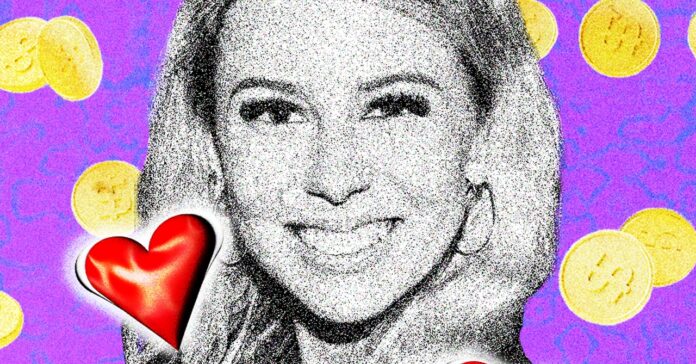In spring 2024, rapper Iggy Azalea was casting about for a concept that she could try to transmute into a hit crypto coin. It had to be memeable—that is, easily remixed and riffed upon—and it had to be attention-grabbing.
On May 29, Azalea launched the Mother Iggy (MOTHER) coin. For its emblem, she selected a picture of her derriere. Within two weeks, the coin had reached a total value of $240 million. (At the time of writing, MOTHER is worth around $50 million.)
“Everybody knows that I have a big butt—it goes viral easily … The butt is just an easy inroad,” Azalea told WIRED at the time of the launch. “My concept for MOTHER has overarchingly been that I love mothers in pop culture and movies; those characters are oftentimes quite deranged, powerful, and crazy, but you respect them. In a Freudian way, there’s also a weird obsession with your friend’s hot mom. I can play on this 1,001 different ways.”
Around that time, a bunch of other celebrities—from Caitlyn Jenner to Andrew Tate and Jason Derulo—were all launching their own crypto coins. The pile-on reflected a renewed fervor among traders for memecoins, a type of cryptocurrency that generally has no utility beyond financial speculation.
Because memecoins do not generate revenue or cash flow, their value is entirely based on the attention they attract, which can fluctuate wildly. Though some people make a lot of money on memecoins, many others lose out. With a general euphoria taking hold in cryptoland as the price of bitcoin rises to historic levels above $100,000, the stage is set for yet further memecoin “degeneracy,” says Azeem Khan, cofounder of the Morph blockchain and venture partner at crypto VC firm Foresight Ventures.
For all the goofiness, memecoin fever has been embraced by some corners of the crypto industry. In search of outsize returns, a small number of hedge funds have invested in memecoins this year. Other investment firms, like Pantera Capital, consider memecoins to be a “Trojan horse” likely to introduce new people to crypto.
The idea, says Robert Le, a crypto analyst at market data company PitchBook, is that memecoin activity on a particular crypto network will translate into a readymade audience for future projects with practical utility built on the same underlying infrastructure. “It does bring some kind of tangential value to other real projects,” says Le.
But others say the memecoin phenomenon is likely to damage crypto by perpetuating the view that the industry is nothing but a paradise for gamblers and grifters. “At best, it looks like a risky casino. Or a series of false promises masking a casino,” wrote Eddy Lazarin, CTO at the crypto division of the venture capital firm a16z, in April. “This deeply affects adoption, regulation/laws, and builder behavior. I see the damage every day. You should too.”
The irony is that memecoins have largely escaped the attention of US financial regulators under the Biden administration, while entrepreneurs attempting to establish meaningful crypto use cases have been targeted for investigation, said Chris Dixon, head of a16z crypto, in an interview with WIRED last year. “The dumbest crypto things, like Dogecoin, which is completely meaningless and silly—that’s perfectly legal,” said Dixon.
There is a potential future in which memecoins could be used by entrepreneurs as a vehicle to raise capital for earnest crypto projects without giving away equity, says Khan. But for now, they represent financial speculation in its rawest form. “We’ve constantly been in this place where as an industry we are seen as a decentralized version of Macau or Vegas. This does nothing to help us in this way,” he says.
Whether or not memecoins are damaging to the crypto industry’s prospects or reputation, a crackdown of some form is likely, industry watchers say, such is the amount of money flying around and the level of risk to traders.
“Memecoins is absolutely a PvP game. For someone to win, someone has to lose. A lot of the people that can least afford to lose money are going to be the ones who lose the most,” says Khan. “There has got to be a crackdown at some point.”
Because memecoins defy easy comparison with traditional investment assets, says Le, they are perhaps best regulated by gambling authorities. “It is basically unregulated gambling. It’s going to probably come down to the purview of whoever the regulator of gambling is in each country,” he says. “Through the grapevine, I’m already hearing some state regulators in the US talking about doing some kind of regulation.” Pump.Fun declined to comment.
Until such a time, though, memecoins will continue to do their thing. On December 5, Hailey Welch of “Hawk Tuah” fame launched a coin, which lost 95 percent of its value in the first hours of trading, leading to an outcry. That same day, traders were throwing money at PNUT, a coin modeled after the celebrity squirrel euthanized late last year by the New York State Department of Environmental Conservation, currently valued at more than $1 billion.
Since launching MOTHER, Azalea has promoted the coin relentlessly to her 7.7 million followers on X, through a flurry of provocative images and meme posts. Part of her plan to ensure her coin has longevity—a rarity in memecoins—is to establish some sort of utility for it. The coin is now accepted as payment by a telecom startup in which Azalea has a stake. “I plan to be here for the long haul. And I will be,” she says.
Eventually, Azalea hopes to parlay the memecoin into other business opportunities—including setting up her own venture fund—by proving to prospective partners and investors that she can identify and ride the zeitgeist.
“I’ve always been a big shitposter,” she says. “I do like to bait, to troll, to say things that are a little provocative. I like to say things and move in ways that I know can be memeable … It’s about virality, ultimately.”
Source : Wired






